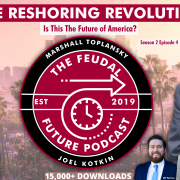The Gloomy Future Facing Trade Unions
Few developments have more cheered progressive activists than the perceived resurgence of labor unions. This has been sparked by largely symbolic efforts to unionize in places such as Starbucks and Amazon, as well as more sizable wins by the Writers Guild of America and the Screen Actors Guild and United Auto Workers, the country’s most important private labor union. In 2022 strike activity more than doubled from the previous year.
Yet ultimately these wins may turn out to be largely Pyrrhic. Although some like Vox see “a new era for the American worker,” private sector union membership, in the 1950s involving more than one-third of the workforce, has dropped to a historic low, representing barely 6 percent; younger workers’ total unionization rates now approach 4 percent of the workforce.
This hardly seems the wave of the future. “Hope springs eternal,” suggests John Russo, a visiting scholar at the Kalmanovitz Initiative for Labor and the Working Poor at Georgetown University. “But the realities on the ground make it difficult to believe.”
To be sure, this may be an ideal time for a labor resurgence. Rising inequality and general fear of downward mobility have boosted support for expanded government and greater redistribution of wealth. Public approval for unions is back to its historic high of 70 percent, up from 48 percent in 2010, and most pronounced among the young.
So why has it been so hard to get unionizing efforts off the ground? Labor organizers list a host of factors from federal laws, the rise of part-time work, technological changes, the shift of jobs to “right to work” states, global sourcing and mass immigration. The decline of unions generally, notes one veteran LA organizer, means there are fewer sectors with sufficient “density” of union employment. The wins by SAG (a union I have been a member of), the UAW, United Parcel Service and Las Vegas casino workers came in already heavily unionized environments. Unions also do best, notes one organizer, where they have the ability to “choke off” businesses, for example at ports, trains and factories or in places, like Las Vegas, where hotel and casino profits make unions relatively affordable.
Less impressive has been union growth in industries like low-end services, technology and finance, which have barely 1 percent union penetration. Despite massive publicity, only one Amazon warehouse has been organized while at Starbucks, despite union organizing in 300 locations, no contracts have been signed. Other targets like McDonald’s are perfecting electronic delivery systems that reduce the need for human labor.
Organizers also confront a labor force that, in large measure, prefers part-time work, choosing to engage in the “gig” economy, where pay and hours are often uncertain. Rather than stirring to action, what Marx called the “reserve army” of the unemployed is simply disengaging. In the US labor market male participation rates have fallen from 80 percent in 1950 to 61 percent now, down nearly 4 percent from 2010. An estimated one-third of Americans are not in the labor force at all, partly because of high rates of incarceration, drug and alcohol abuse and other health issues. “The real issue facing labor,” Russo suggests, “is not wages and benefits but changes in the nature of work.”
Technology is also playing a key depressive role, threatening the jobs of blue-collar warehouse workers. Walmart expects to automate its systems with new software and lay off 2,000 workers, with 65 percent of stores having automation by 2026. Similarly, even creative workers — like the actors and writers in Hollywood — remain, despite the recent contracts, vulnerable to what economists refer to as “skills-based technological change.” After all, as entertainment becomes more digitized, humanity means less, as is evident by the popularity of video games and movies derived from them. You don’t need a Shakespeare to write the next Marvel movie, or, for that matter, many news stories, as artificial intelligence functions as a “plagiarism machine.” How long before AI ascends from doing box scores and stock quotes to directing opinion on the issues of the day? As the business professor Clayton Christensen noted, innovation often enters a field at the bottom and gradually works its way up. Even the ranks of “caregivers,” a growing target for union organizers, are threatened by tech firms which are creating what one developer calls “something like your personal AI friend”; others are developing new robotic nannies. Even a potential pool of new union members in the “the world’s oldest profession” could find themselves replaced by perfectly compliant, and supernaturally enhanced, AI-powered machines.
In the auto industry even after last year’s UAW strike, which the Nation hailed as “a historic victory,” prospects are surprisingly dim. Union power there has been on the decline for decades. The UAW now has roughly a quarter the membership it had in 1979, and much of the growth has been in nonunion shops, many of them located in “right-to-work” states, largely in the South. Only two of the top ten auto manufacturing states — Illinois and Michigan — have laws favorable to labor organizing.
Ultimately the auto industry union battle must be won in the South, the nation’s fastest growing region. But it’s geography, notes Ned Hill, professor of economic development in the John Glenn College of Public Affairs at Ohio State and a widely respected analyst of Midwestern labor issues, that has been traditionally “bad for organizing.” Hill suggests the UAW may find it difficult to convince people working for Tesla and the foreign nameplate manufacturers to unionize, particularly as some companies, like Toyota, seem willing to match union-won raises. These firms are not worried just about wages but about dealing with an institution capable of shutting them down and adding ever more costly demands such as shorter work weeks.
Read the rest of this piece at The Spectator.
Joel Kotkin is the author of The Coming of Neo-Feudalism: A Warning to the Global Middle Class. He is the Roger Hobbs Presidential Fellow in Urban Futures at Chapman University and Executive Director for Urban Reform Institute. Learn more at joelkotkin.com and follow him on Twitter @joelkotkin.
Photo: U.S. Department of Agriculture via Flickr in Public domain.

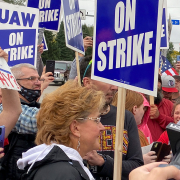
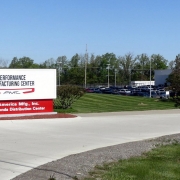
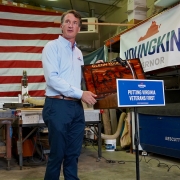
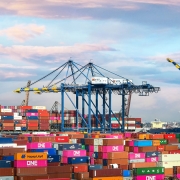 Barrett Ward, CC 0.0 License
Barrett Ward, CC 0.0 License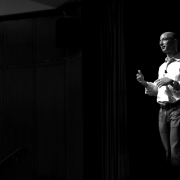 ptufts
ptufts
